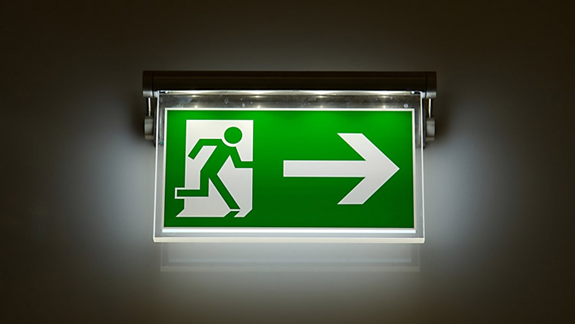What are the regulations and standards on emergency lighting?
Regulations On Emergency Lighting
When a fire occurs in a building, many peoples first thoughts are to get out quickly and safely. However, that could become quite difficult if the fire causes a power cut, and the room is filling up with thick, black smoke. This then makes finding your way out a lot harder, regardless of how familiar you are with your surroundings. This is essentially why it is important to install emergency lighting in your building as when there is power outage, the emergency lighting will activate and bring light to the building, meaning that everyone can still find their way to the nearest emergency exit in time. As well as this, emergency lighting is also there to help guide any emergency services going into the building to do their job. Once the emergency lighting has activated, it should last up to at least 90 minutes and then it will automatically recharge itself when the power is back on.
In order to comply with emergency lighting requirements, there needs to be enough emergency lighting for people to be able to leave the premises safely in the event of an emergency. There are many standards and regulations that cover all aspects of emergency lighting that the responsible person in a building should abide by. Getting a qualified engineer in to certify your system is an effective way of helping to ensure quality, reliability, and conformity.
Emergency lighting is required by law in the EU and the UK, with Regulatory Reform (Fire Safety) Order 2005, The Building Regulations 2006, The Workplace Directive and British Standard BS 5266 (amongst others). This means that any building such as hotels, schools, hospitals, pubs and clubs, offices, shops, entertainment venues including tents or marques, or any other larger, multi-story building must comply with having emergency lighting.
Under the Regulatory Reform (Fire Safety) Order 2005, by law, businesses must install emergency lighting in their premises. This Order states that emergency routes and exits requiring illumination must be provided with emergency lighting of adequate intensity in the case of failure of their normal lighting.
UK legal emergency lighting regulations require there to be an emergency lighting system which covers the following things:
- Each exit door
- Any trip hazards (i.e. stairs)
- Any changes in direction
- First aid equipment
- Fire alarm triggers
- Fire extinguishers
- Power supplies
- Escape routes, including lifts
- Intersection of corridors
- Outside each final exit and on external escape routes
- Emergency escape signs
- Stairways so that each flight receives adequate light
- Changes in floor level
- Windowless rooms and toilets exceeding 8m²
- Fire fighting equipment
- Fire alarm call points
- Equipment that would need to be shut down in an emergency
- Areas in premises greater than 60m²
What is BS EN50172?
This standard looks at the illumination of escape routes and safety signs if all or part of the normal lighting supply fails. It specifies the minimum requirements of emergency lighting based on the size, type and usage of each building and it also applies to standby lighting used as emergency escape lighting as well.
British Standard EN50172 states that emergency lighting should:
- Indicate escape routes clearly and unambiguously
- Provide illumination along such routes to allow safe movement towards and through the exits provided
- Ensure that fire alarm call points and firefighting equipment provided along escape routes can be readily located
- Permit operations concerned with safety measures.

